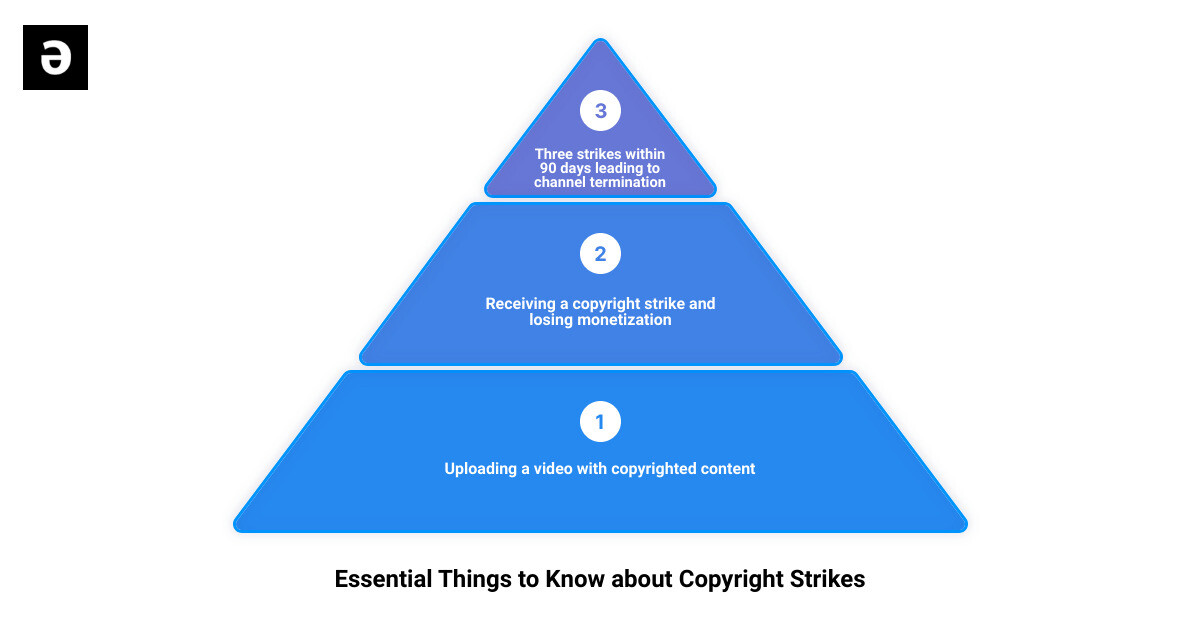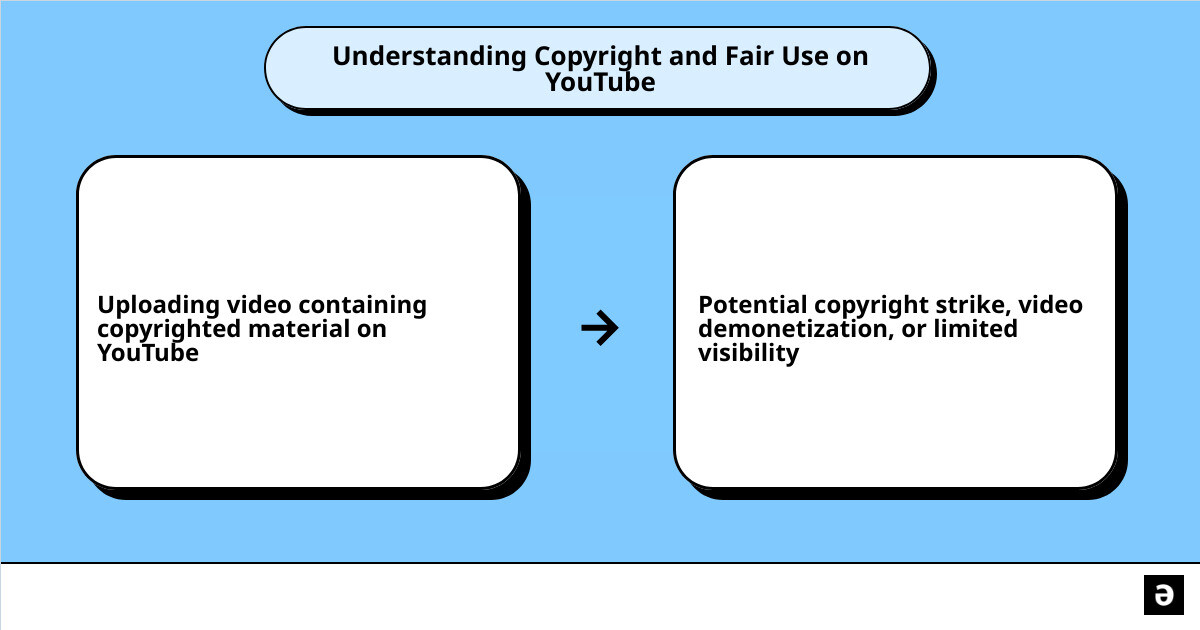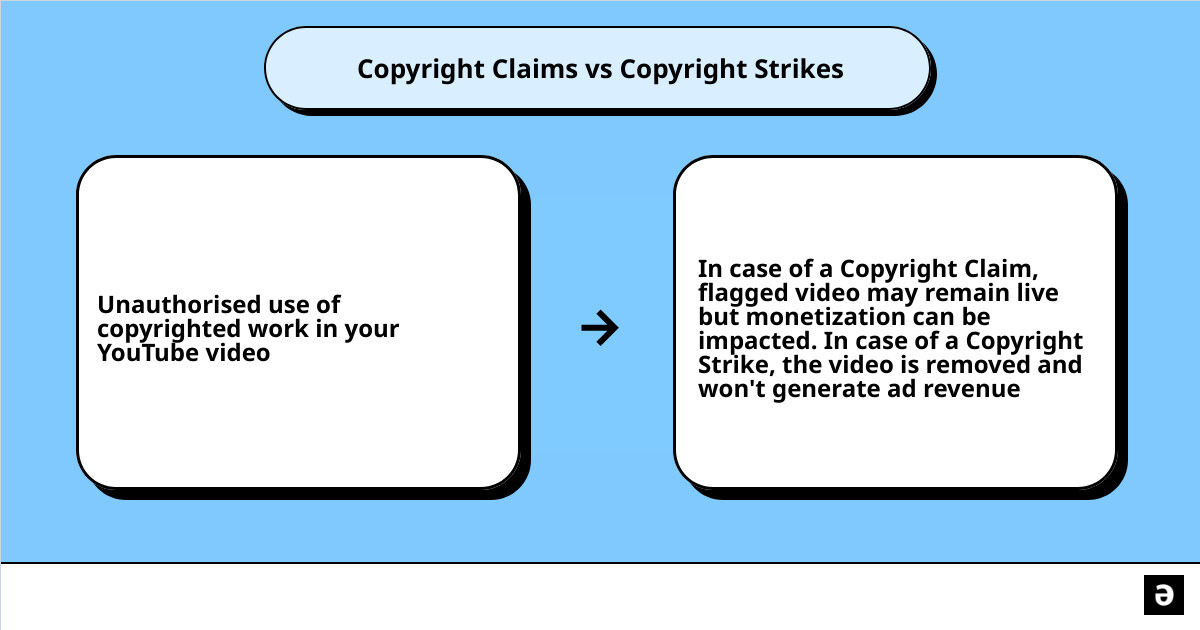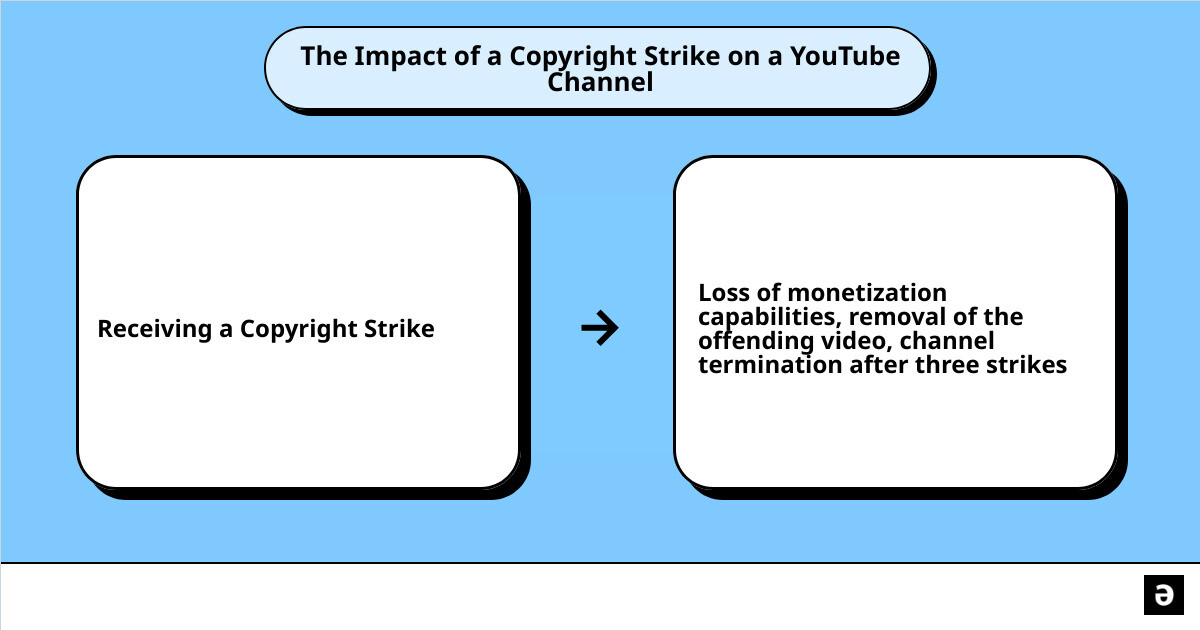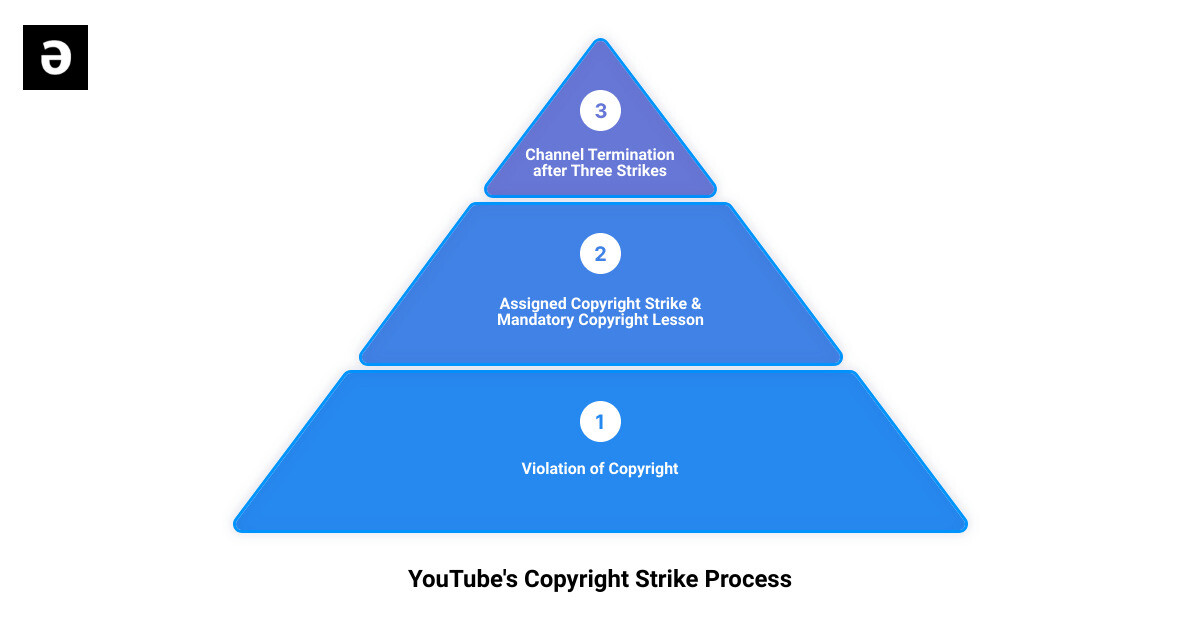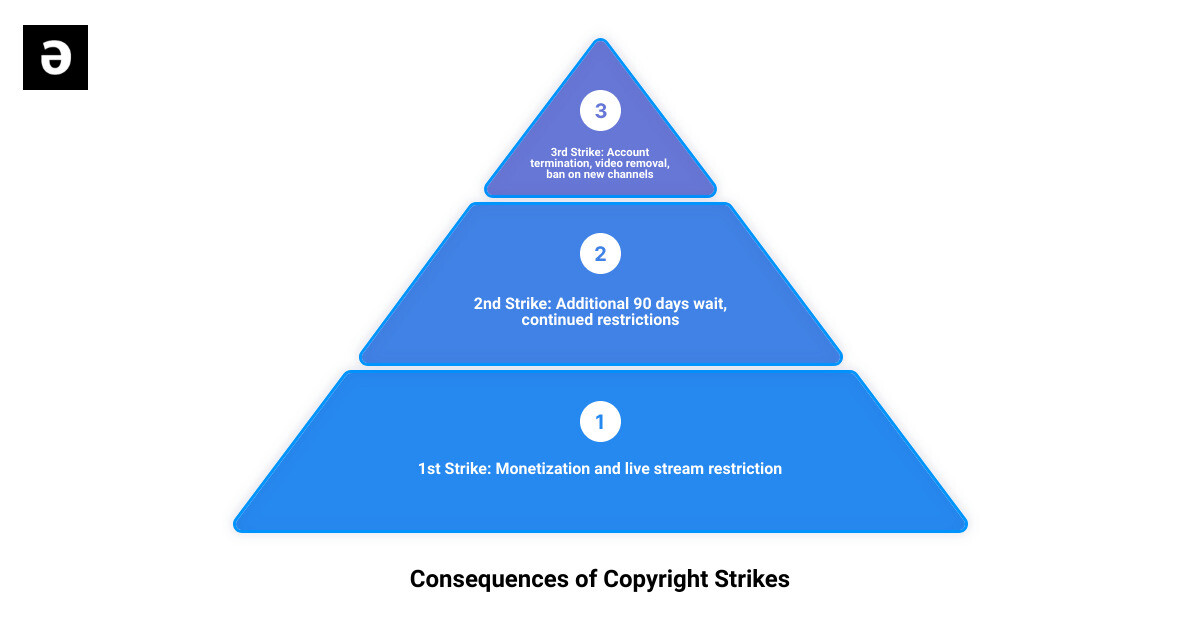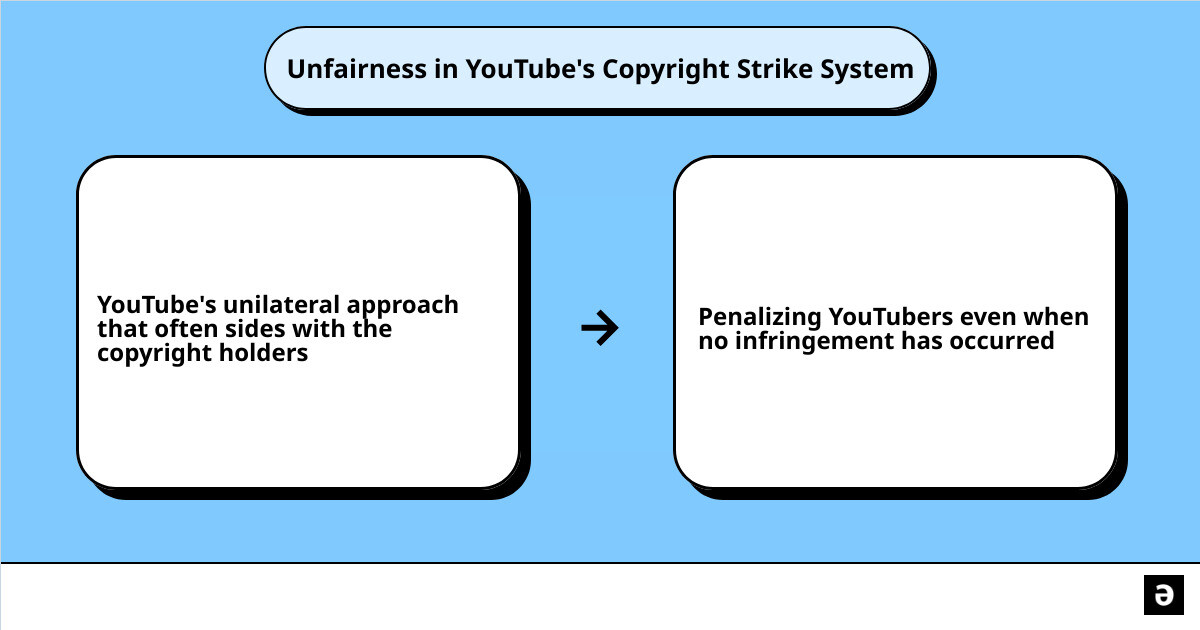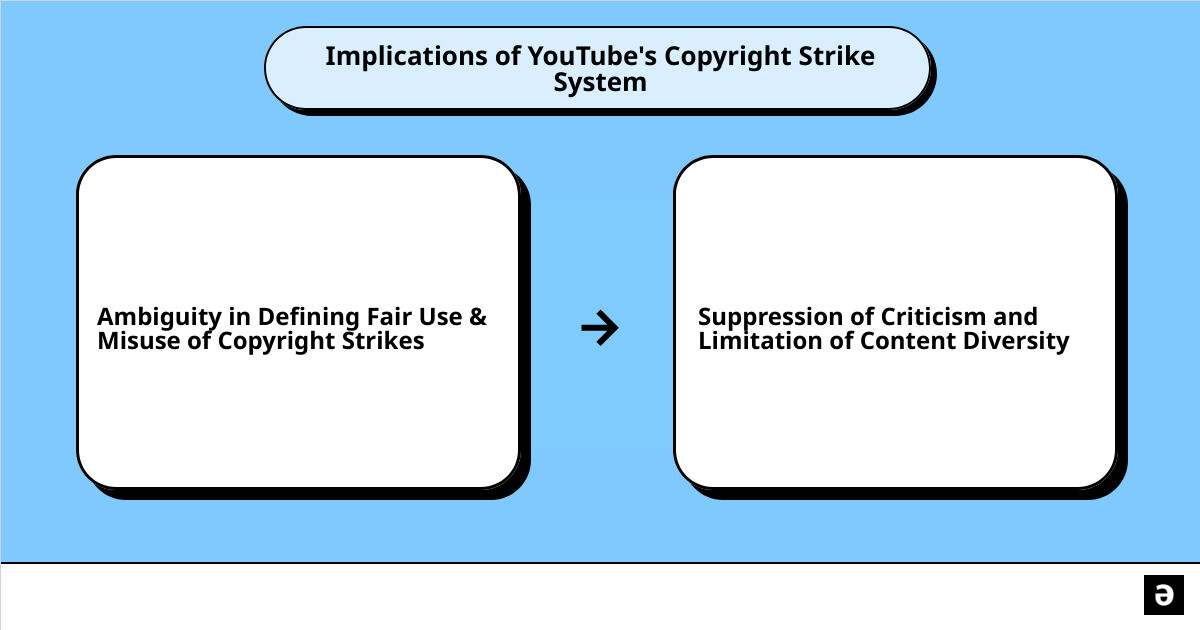As a content creator, you’re no stranger to the world of copyright laws, particularly if you’re using platforms like YouTube. But the concept of a copyright strike can be a daunting one, especially if you’re unsure about what it entails or how it can impact your channel. If you’ve ever asked yourself, “What is a copyright strike?” then you’re in the right place. Here at ENX2 Legal Marketing, we’ve got the answers you need.
When it comes to understanding the intricate world of copyright laws on YouTube, it’s not just about knowing the rules, but understanding the implications of not following them. Whether it’s a song, an image, or a video clip you don’t own the rights to, using someone else’s work without permission can land you in hot water. And while both a copyright claim and a copyright strike stem from the same issue, a copyright strike is a far more serious offense that can result in your channel’s suspension.
But before you start panicking, let us assure you, it’s not all doom and gloom. With the right knowledge and strategies, you can navigate the world of YouTube copyright laws with ease, avoid strikes, and continue creating the content you love.
Here’s a brief rundown of what you need to know about copyright strikes:
- A copyright strike occurs when a creator uploads a video containing audio or images they don’t own the rights to.
- The copyright holder must manually find the violation and ask YouTube to remove the video.
- A copyright strike negatively affects your entire YouTube channel.
- If you receive a copyright strike, you lose the ability to monetize your videos or live stream until the strike expires.
- Three strikes within 90 days result in your channel’s termination and a ban from the platform.
Stay tuned as we delve deeper into the world of copyright strikes, explore the difference between a copyright claim and a strike, and offer tips on how to avoid these issues altogether.
The Concept of Copyright: A Brief Overview
Before diving into the nuances of YouTube’s copyright enforcement mechanisms, it’s crucial to understand the concept of copyright itself.
What is Copyright?
According to our in-house expert at ENX2 Legal Marketing, copyright is a legal right that gives creators of original work – be it music, videos, images, or literary works – the exclusive authority to use, distribute, and monetize their creations. It’s like a protective shield that allows creators to control how their work is used, distributed, and monetized, thereby ensuring that their intellectual sweat doesn’t go unrewarded.
Yet, copyright laws are not absolute. They do not grant the creator or the entity complete control over an Intellectual Property (IP). For instance, the mere mention of an IP in creative works or reviews is not an infraction on the IP. This notion brings us to the concept of “Fair Use”, a legal doctrine that permits the use of copyrighted works under specific circumstances such as criticism, comment, news reporting, teaching, scholarship, and research.
How Does Copyright Work on YouTube?
As an open platform that allows users to upload and share videos, YouTube is inevitably susceptible to copyright infringements. Every time a video is uploaded, YouTube runs the risk of being legally attacked if the video contains footage or music that infringes on someone’s copyright.
To mitigate this risk, YouTube uses a robust system known as Content ID to scan every video uploaded to the platform. This system checks if a video has permission from the IP holder or tracks how much of the IP is used in the video. If it detects a potential copyright infringement, YouTube may block the video, demonetize it, or limit its visibility in the platform’s search algorithm.
However, YouTube’s copyright policy has sparked controversy, particularly with its interpretation of the Fair Use laws. For instance, the platform has arbitrarily decided that clips longer than 20 to 30 seconds can be considered as copyright infringement. This ambiguity in YouTube’s copyright policy often leaves content creators in a grey area, leading to challenges in striking a balance between creativity and compliance.
In the following sections, we will delve deeper into the intricacies of YouTube’s copyright enforcement, namely the difference between a copyright claim and a copyright strike, and the repercussions of receiving a copyright strike.
The Difference Between Copyright Claim and Copyright Strike
You may have heard the terms “copyright claim” and “copyright strike” used interchangeably. While they both relate to copyright issues on YouTube, they have distinct meanings and implications. Let’s break down the differences, starting with a copyright claim.
What is a Copyright Claim?
A copyright claim occurs when YouTube’s Content ID system detects a match between a part of your video and a copyrighted work. This system is automated and scans all uploaded content against a vast database of files submitted by copyright owners.
For example, if you use a copyrighted song in your video without permission, the Content ID system could identify this and generate a claim on behalf of the copyright owner. The copyright owner can then decide what action to take. They may choose to let your video remain live while earning revenue from any ads placed on it, or they can decide to block it in certain regions or entirely.
It’s important to note that a copyright claim does not negatively affect your channel’s status. It only applies to the specific video that has been flagged. However, it can impact the monetization of your video, as the copyright owner can claim revenue generated from it.
What is a Copyright Strike?
In contrast, a copyright strike is a more serious matter. It happens when a copyright owner manually identifies a violation and requests YouTube to remove your video. This means that the video won’t be viewable, and it will no longer generate ad revenue for you.
Unlike a claim, a copyright strike has a direct impact on your entire channel, not just the offending video. If you receive a copyright strike, you lose the ability to monetize your videos or live stream from your account until the strike expires. If you accrue three copyright strikes, your channel will be terminated, and you’ll be prohibited from creating any new channels.
In essence, while both a copyright claim and a copyright strike deal with copyright infringement on YouTube, the latter is far more severe, affecting your entire channel and potentially leading to its termination.
In the next section, we’ll delve into how YouTube manages copyright infringement and the role of the Content ID system in copyright management.
The Process of Issuing a Copyright Strike on YouTube
How YouTube Manages Copyright Infringement
As we delve into the world of copyright strikes, it’s important to understand how YouTube manages copyright infringement. YouTube employs a copyright policing practice to manage copyright infringement and comply with the Digital Millennium Copyright Act (DMCA). The DMCA serves as the foundation for the design of the YouTube copyright strike system.
When a user is accused of copyright infringement, YouTube issues a “copyright strike” on the user’s account. The accused user is then required to watch a warning video about copyright rules and answer trivia questions about the implications of copyright infringement. If a user accumulates three copyright strikes within 90 days, YouTube terminates the user’s channel, removes all their videos, and prohibits them from creating another channel.
A significant aspect of YouTube’s copyright policing practice is that strikes are often assigned based on reports of copyright violations from bots. This process is automated, which can lead to criticisms about the fairness of the strike process.
The Role of Content ID in Copyright Management
Another key component in YouTube’s copyright management is the Content ID system. Content ID claims come with a monetization, tracking, or viewing restriction rule. The rights holder can decide to block the video entirely, monetize the video by placing ads against it, or track the video’s viewership stats.
Copyright claims on YouTube are generally made against video clips, audio, and other content that qualifies as owned media and hasn’t been made available for publication. The rights owners control their Content ID policy and can stop certain content from being uploaded to YouTube, like TV clips or music videos.
The Content ID feature is not accessible to everyone. YouTube has very specific criteria for rights owners who want to track their content. If a copyright claim is made against a video, the uploader will need to dispute it. The rights owner then has 30 days to respond to the dispute.
In short, the management of copyright infringement on YouTube is a complex process that heavily relies on automated systems like Content ID. As a YouTube content creator, understanding these systems is vital to prevent unnecessary copyright strikes and manage disputes effectively.
At ENX2 Legal Marketing, we understand the intricacies of YouTube’s copyright policies. Our team can help you navigate these complexities and create content that abides by these policies, ensuring your YouTube channel’s success. Contact us today to partner with our expert social media marketing team.
The Consequences of Receiving a Copyright Strike
Beware, YouTube creators! A copyright strike is not just a slap on the wrist but a severe blow to your YouTube presence. After spending countless hours developing unique content, the last thing you want is for your channel to be penalized, or worse, terminated. So, what exactly happens when you receive a copyright strike?
What Happens When You Get a Copyright Strike?
Nobody craves to see that dreaded email from YouTube stating they’ve received a copyright strike. As explained by Christopher Knighton of ENX2 Legal Marketing, a copyright strike is issued when you’ve uploaded something that you do not own the copyright to. The moment you receive a copyright strike, your channel is no longer in good standing. This means you lose the privilege to live stream or monetize your videos until the strike expires.
But there’s a glimmer of hope. After your first strike, YouTube is willing to give creators another chance. If you complete YouTube’s Copyright School, the strike will expire after 90 days, and your privileges will be reinstated.
The Impact of Multiple Copyright Strikes
As the old saying goes, “once is a mistake, twice is a choice”. If you’re unlucky enough to receive a second copyright strike before the first one expires, things get even more serious. You’ll have to wait an additional 90 days for the second strike to expire, and all the while, your monetization and live stream privileges will continue to be restricted.
The third strike, however, is the final nail in the coffin. If you receive a third copyright strike before the first two have expired, your YouTube account will automatically be terminated, and your uploaded videos will be removed. Worse still, you’ll be banned from creating any new YouTube channels in the future.
The Seriousness of a Copyright Strike: Account Termination and Other Penalties
The repercussions of copyright strikes extend beyond YouTube. The copyright holder could also choose to take you to court. If you lose the case, you’re likely to end up with a hefty fine to pay, as well as legal fees. And let’s not forget the damage it can do to your reputation.
In short, the seriousness of a copyright strike cannot be overstated. It’s a formal notice issued by YouTube due to violating the platform’s copyright rules, and receiving 3 strikes in any 90-day period can lead to account termination.
So, how can you, as a YouTube creator, avoid this doomsday scenario? Stay tuned for our next section where we’ll dive into the best practices to avoid copyright strikes and how to resolve them if you do receive one.
But remember, if you’re feeling overwhelmed by YouTube’s rigid copyright policies, we at ENX2 Legal Marketing are here to help. We understand the platform’s intricacies and can guide you in creating quality content that abides by these policies. Don’t hesitate to get in touch with our expert social media marketing team.
How to Avoid and Resolve Copyright Strikes
Navigating YouTube’s copyright system can feel like walking on a tightrope, but with a solid understanding of the rules, you can avoid stepping on any copyright landmines. As experts in digital marketing and content creation at ENX2 Legal Marketing, we have a wealth of experience in copyright law and YouTube’s regulations. Here, we share our top tips for avoiding copyright strikes and how to resolve them should you receive one.
Best Practices to Avoid Copyright Strikes
The best defense is a good offense, and when it comes to copyright strikes, this means being proactive in avoiding any potential pitfalls. Here are several strategies to consider:
Use Substitute Music: Music is one of the most common culprits for copyright strikes. When creating a video, consider using copyright-free music or acquiring the necessary rights to use a particular song. This will not only make your video more engaging but also protect you from copyright issues.
Understand Fair Use: Fair use allows you to use copyrighted material under certain circumstances without needing permission from the copyright owner. For instance, if you add a new expression or meaning to the original content, it might qualify as fair use. A common example is reaction videos, where creators record themselves reacting to other creators’ content, TV shows, movies, and music.
Original Content is King: Always strive to create original content. This not only protects you from copyright strikes but also boosts your credibility and authenticity as a creator.
How to Resolve a Copyright Strike: Counter-Notification, Retraction, and Expiration
Despite your best efforts, you might still receive a copyright strike. If this happens, don’t panic. There are ways to resolve it:
Wait for it to Expire: Copyright strikes typically expire after 90 days. During this time, avoid any more violations and ensure you complete YouTube’s Copyright School.
Request a Retraction: You can contact the person who claimed your video and ask them to retract their claim of copyright infringement.
Submit a Counter Notification: If you believe your video was removed by mistake or qualifies as fair use, you can submit a counter notification.
Dealing with copyright strikes can be stressful, but understanding the system and knowing how to navigate it can significantly ease the process. And remember, we at ENX2 Legal Marketing are here to help. Our team of experts can guide you through the complexities of copyright law and YouTube’s policies, ensuring your content remains visible, engaging, and compliant.
The Controversies Surrounding YouTube’s Copyright Strike System
As you navigate the world of YouTube copyright laws, you’ll quickly encounter a whirlwind of controversy. At ENX2 Legal Marketing, we’ve seen firsthand how this system can impact creators and their content. Let’s delve into some of the critical issues surrounding YouTube’s copyright strike system.
Criticisms of the Copyright Strike Process
YouTube’s copyright strike process has come under fire for its seemingly unilateral approach that often sides with the copyright holders, sometimes ignoring the rights of the content creators. Critics argue that the system frequently assumes guilt, penalizing YouTubers even when no infringement has occurred.
A notable example is how YouTube and Nintendo faced criticism for reportedly threatening video game reviewers with strikes. The process is also criticized for its reliance on bots to report copyright violations, leading to potential errors and misjudgments.
The Issue of Fair Use and Copyright Strikes
The concept of “fair use” is a critical element in copyright law, allowing for the use of copyrighted content in specific contexts such as criticism, comment, news reporting, teaching, scholarship, and research. However, the application of fair use in the YouTube copyright system is contentious.
YouTube creators have reported receiving copyright strikes for media usage that falls within the scope of fair use. As our expert at ENX2, [expert name], points out, the challenge lies in defining what constitutes “fair use” and who gets to make that call.
Furthermore, there are instances where creators have received strikes for posting their own work. Such issues raise questions about the fairness and efficiency of YouTube’s copyright strike system.
Another issue lies in the suppression of criticism. Some YouTube creators report that copyright violation claims have been used strategically to suppress criticism of corporate products. This misuse of the copyright system can stifle free speech and limit the diversity of content on the platform.
As we at ENX2 Legal Marketing often emphasize, understanding the intricacies of YouTube’s copyright strike system is crucial for content creators. Although this system is designed to protect intellectual property, its current implementation has sparked considerable controversy and criticism. Awareness and vigilance can help creators navigate this complex landscape, ensuring their content remains compliant while still being engaging and visible.
Conclusion: Navigating the Complex world of YouTube Copyright Strikes
As we’ve delved into the world of YouTube copyright strikes, it becomes clear that this is not a simple field to navigate. It’s a complex system, with a fine balance between protecting intellectual property rights and fostering creativity and freedom of expression. At ENX2 Legal Marketing, we understand the challenges that come with this territory.
Many creators have raised concerns about the fairness of the strike process, with criticisms centered around the assumption of guilt and the stifling of fair use. As noted by BBC News, there’s a belief that the system leans heavily in favor of copyright holders, sometimes to the detriment of creators.
This is not to say that copyright should be ignored. On the contrary, it is an essential aspect of the creative process that protects creators’ rights to their work. But it is equally important that the enforcement of these rights does not stifle creativity or freedom of expression.
An important part of navigating this complex landscape is understanding and adhering to the guidelines set by YouTube. Being aware of what constitutes copyright infringement and making sure to respect the intellectual property rights of others is crucial.
One of the most effective ways to avoid copyright strikes is by creating original content or using royalty-free or licensed material. As Christopher Knighton from ENX2 Marketing advises, experimenting with your video content and adding your unique personality can also help reduce the chances of getting flagged.
In the event that you receive a copyright strike, it’s essential to respond promptly and appropriately. This may involve submitting a counter-notification if you believe you’ve been wrongfully accused, or working with the copyright owner to resolve the issue.
In conclusion, while the YouTube copyright strike system may seem daunting, with awareness, understanding, and respect for intellectual property rights, it is possible to successfully navigate this landscape.
At ENX2 Legal Marketing, we are committed to helping creators understand the complexities of digital copyright. Whether you’re a seasoned YouTuber or just starting out, we are here to guide you through the process, ensuring that your content is not only engaging but also compliant with copyright laws.
Remember, the world of YouTube copyright strikes may be complex, but it’s not insurmountable. With the right knowledge and guidance, you can navigate it successfully and continue to create engaging content for your audience.


